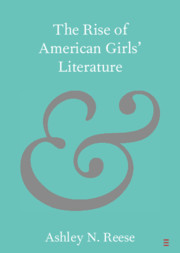Element contents
The Rise of American Girls' Literature
Published online by Cambridge University Press: 21 May 2021
Summary
Keywords
- Type
- Element
- Information
- Online ISBN: 9781108942546Publisher: Cambridge University PressPrint publication: 17 June 2021

